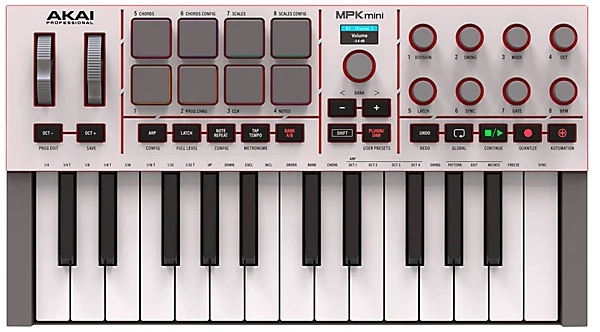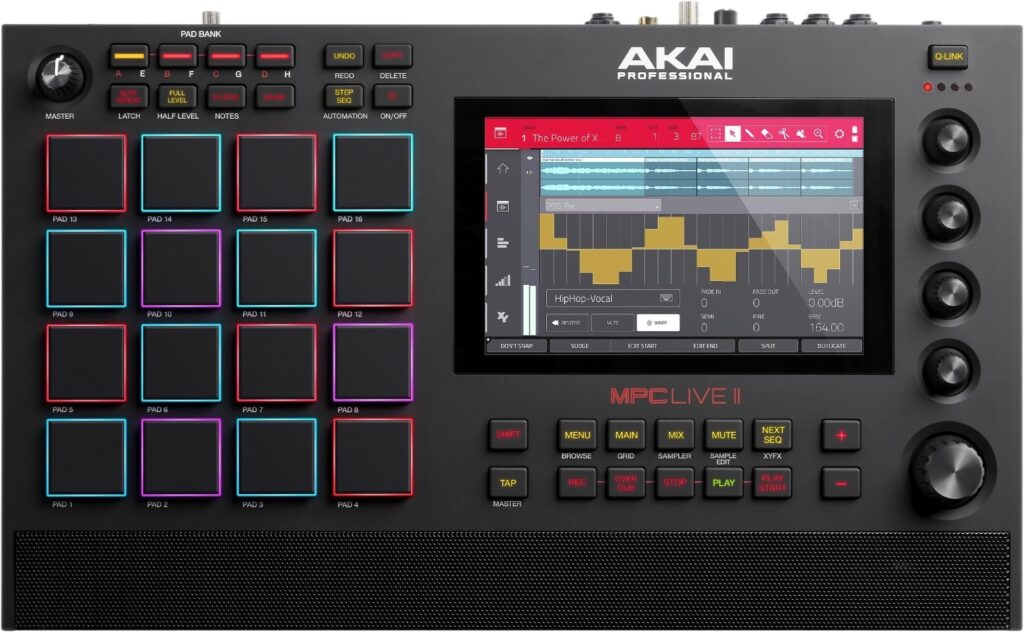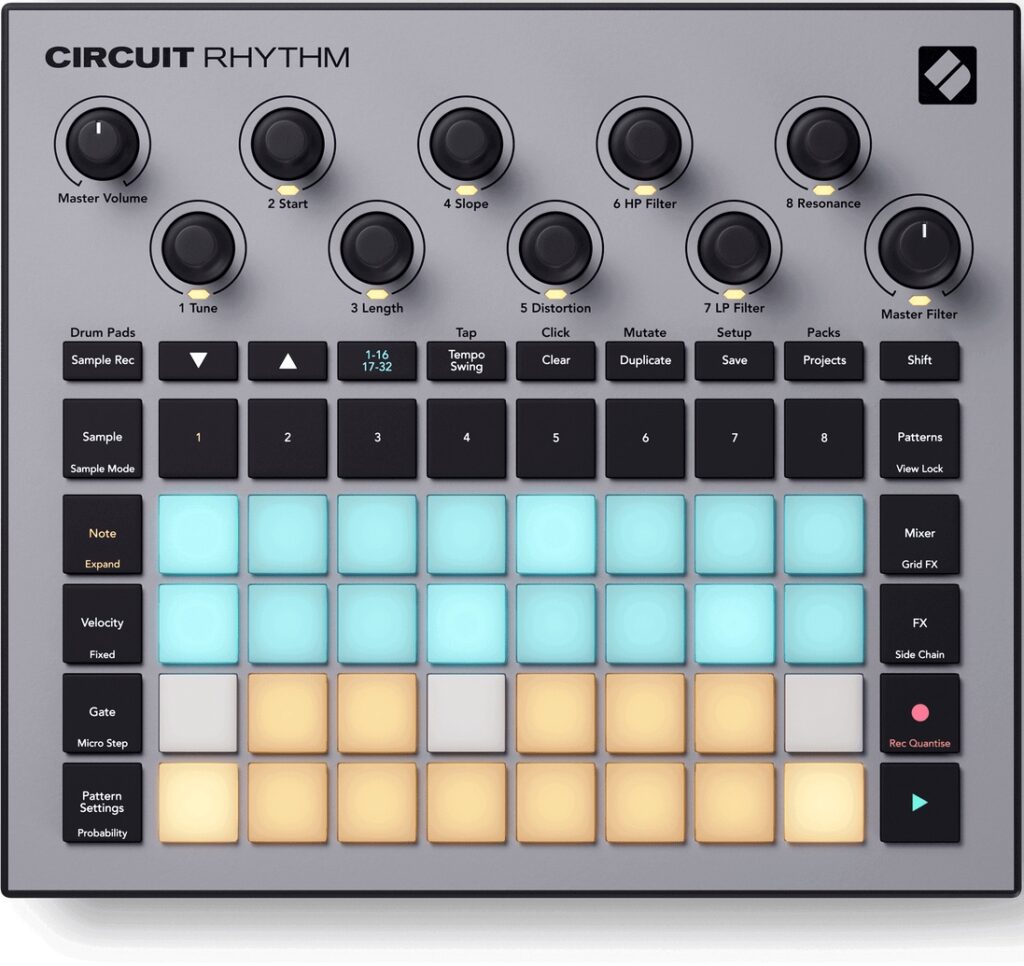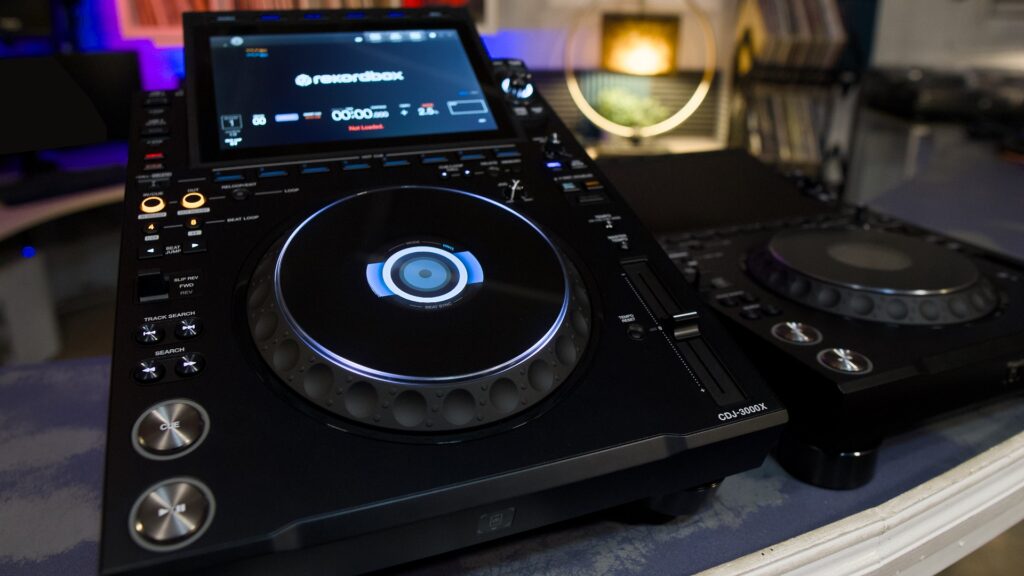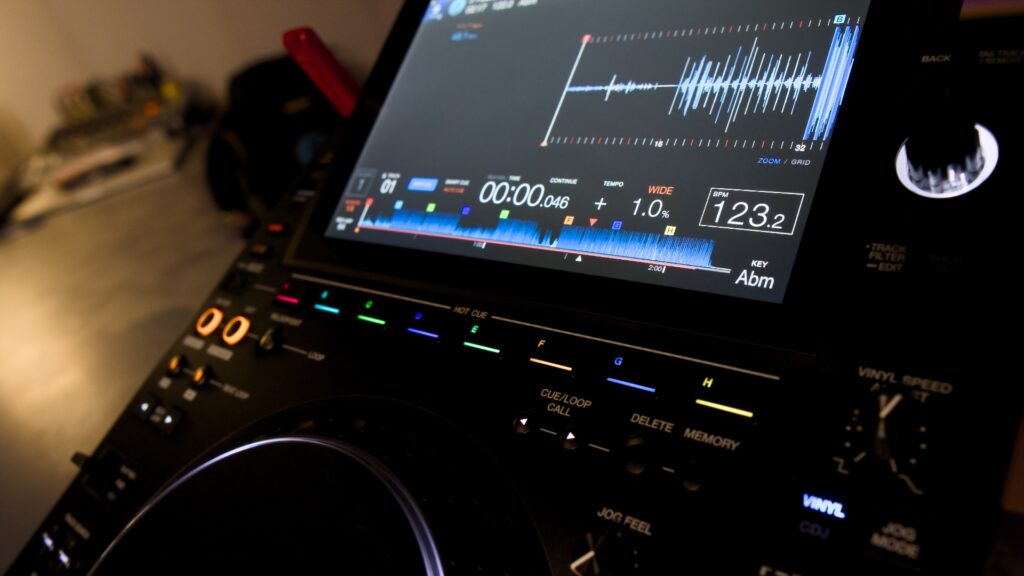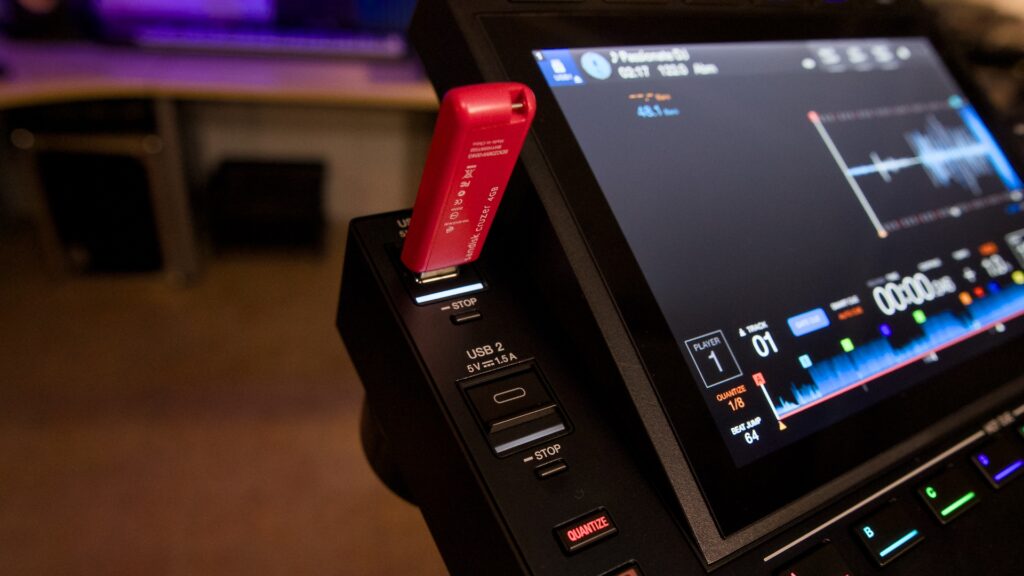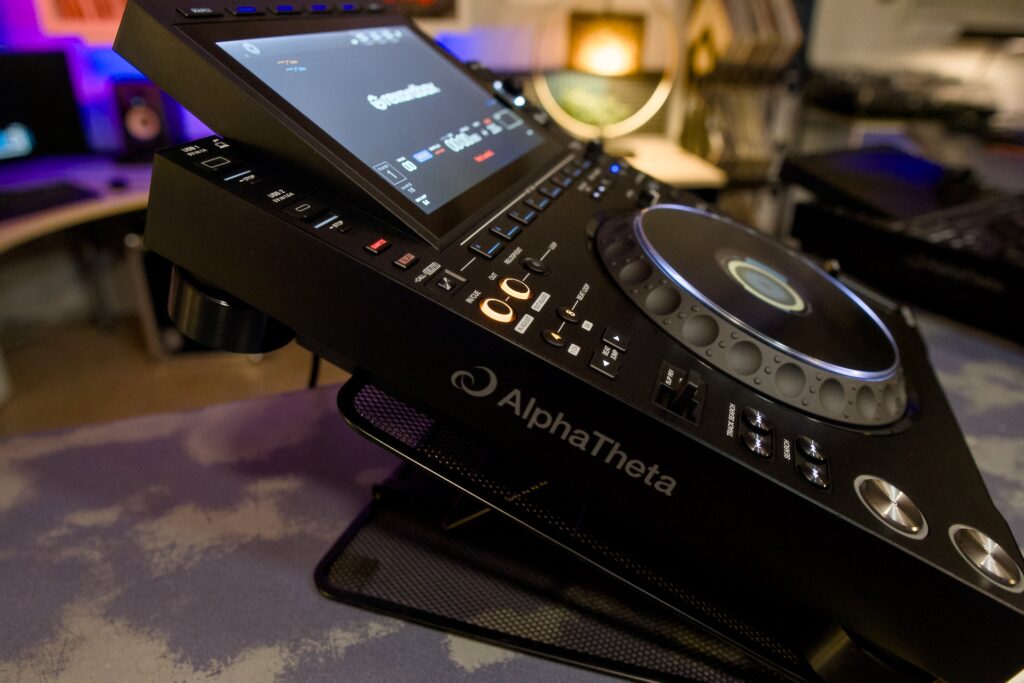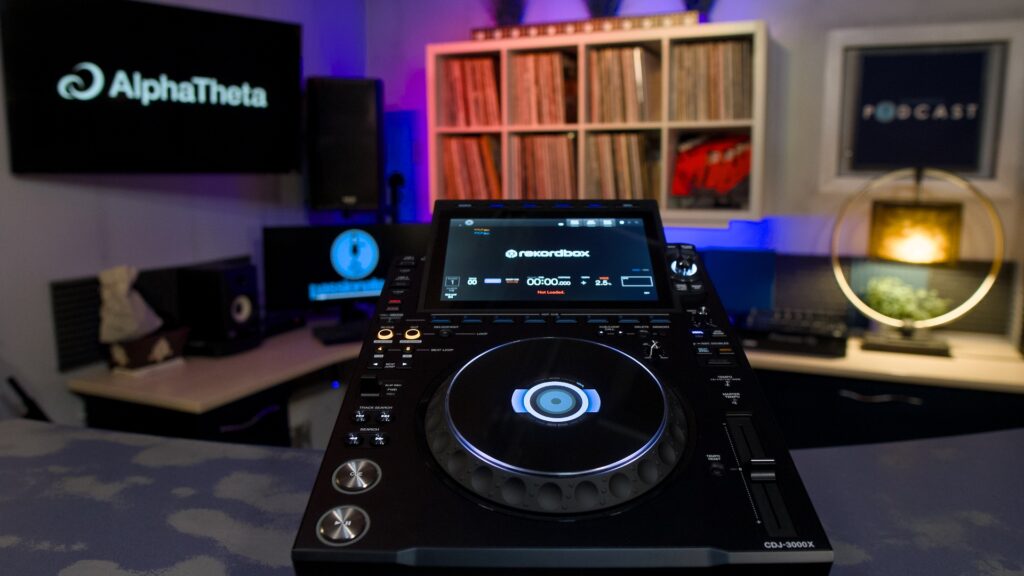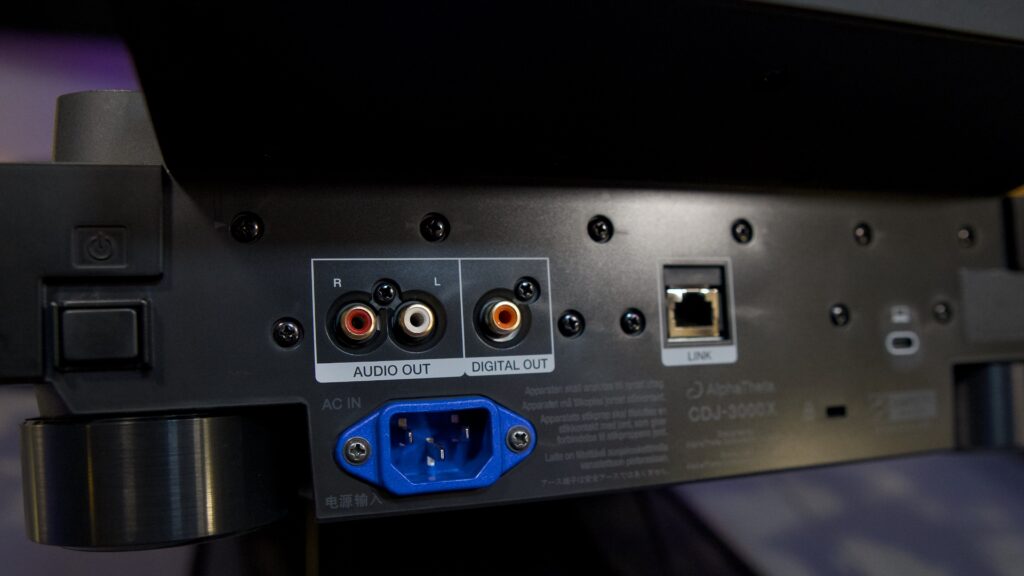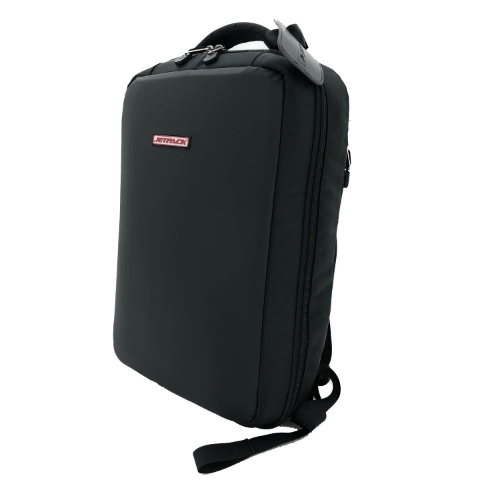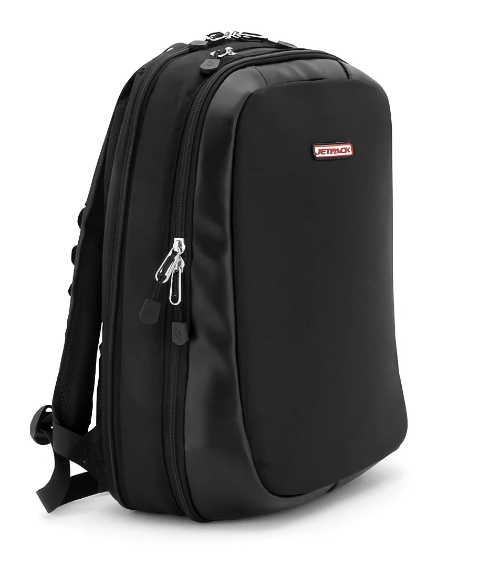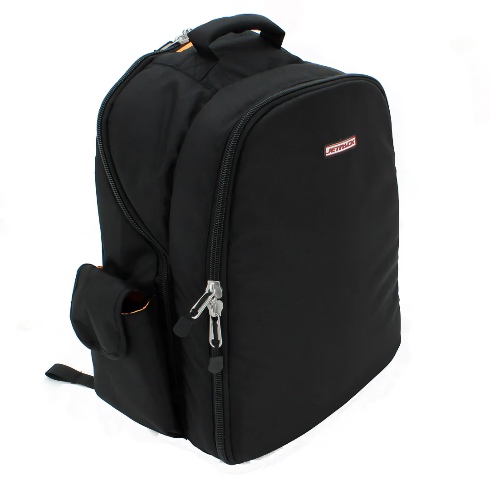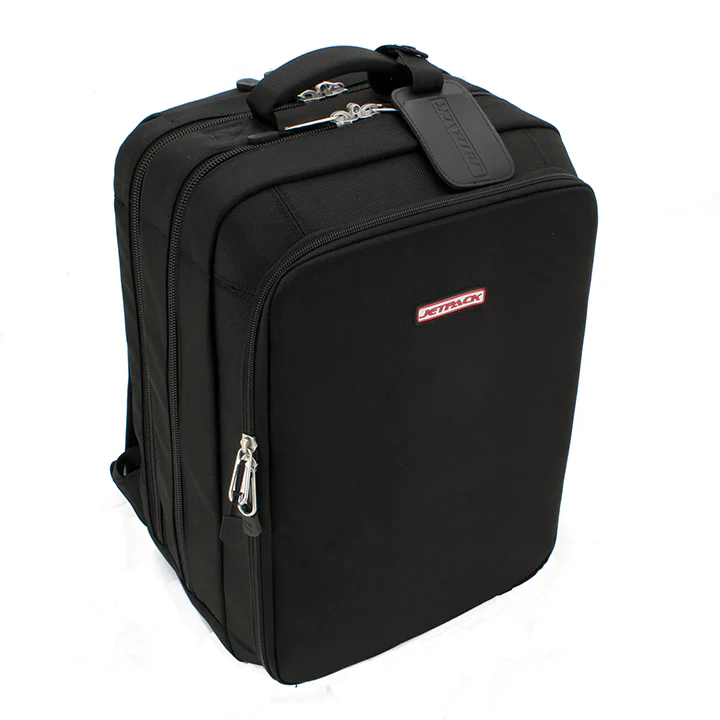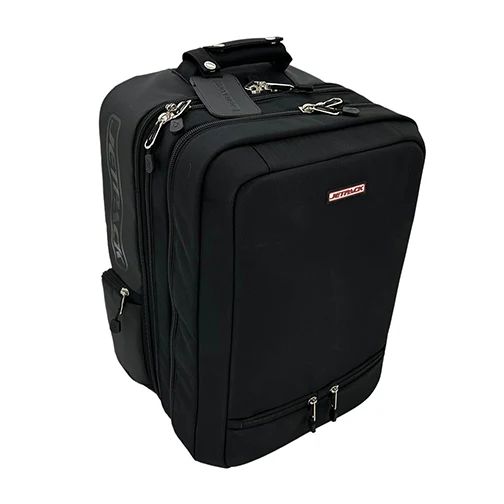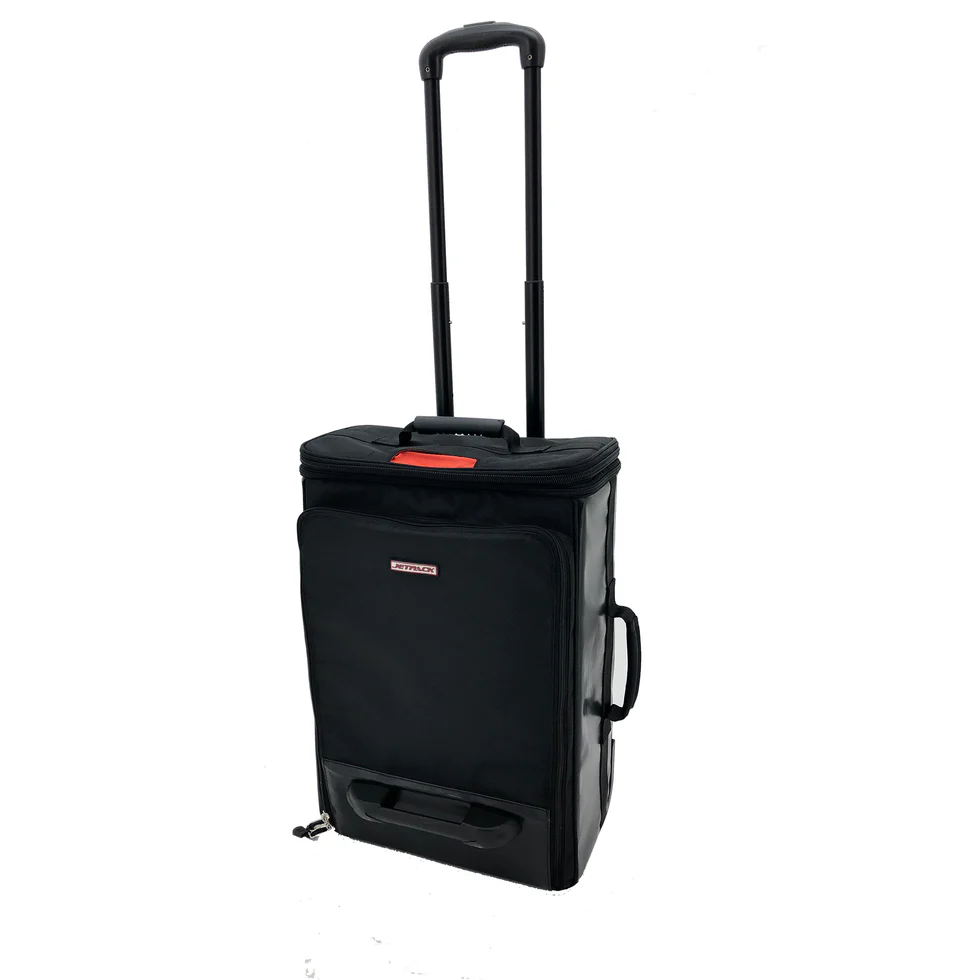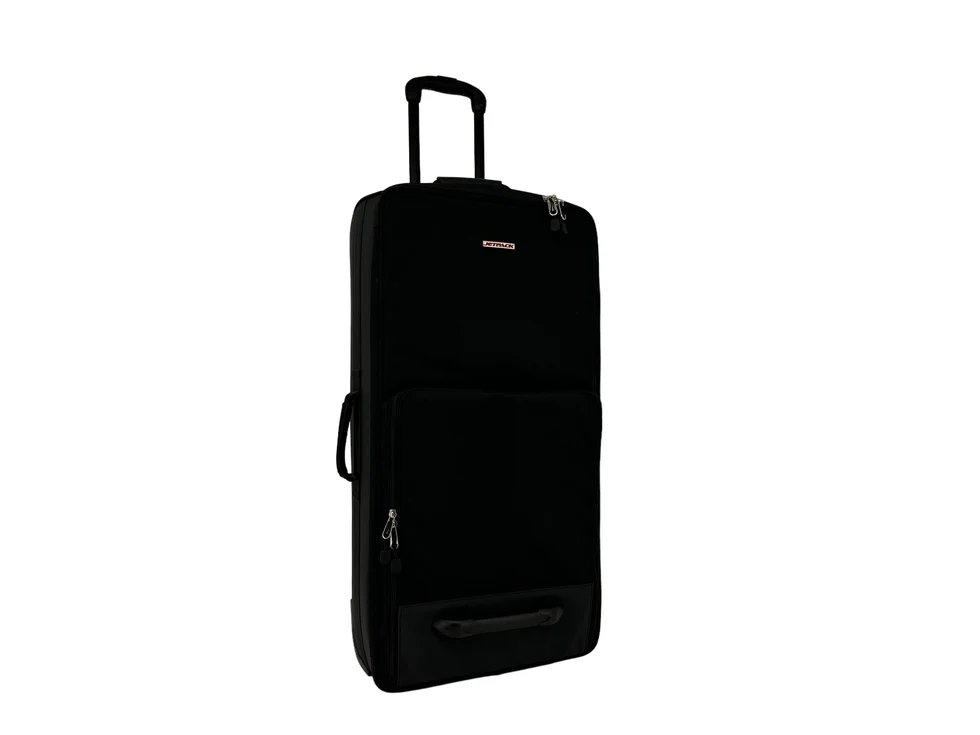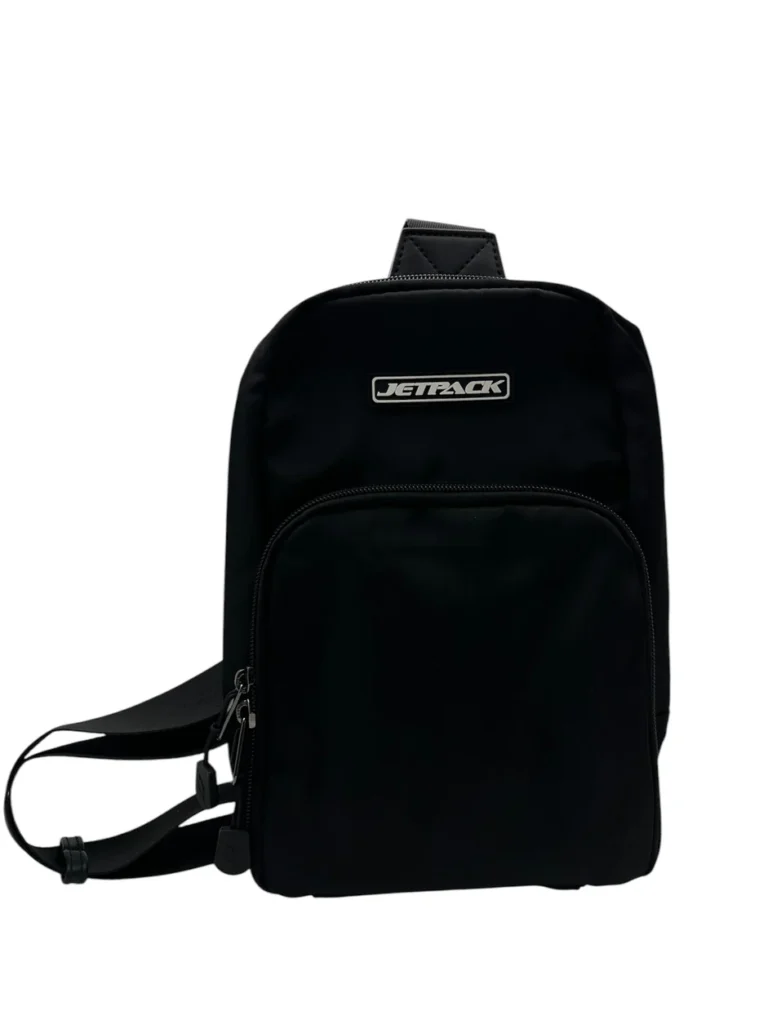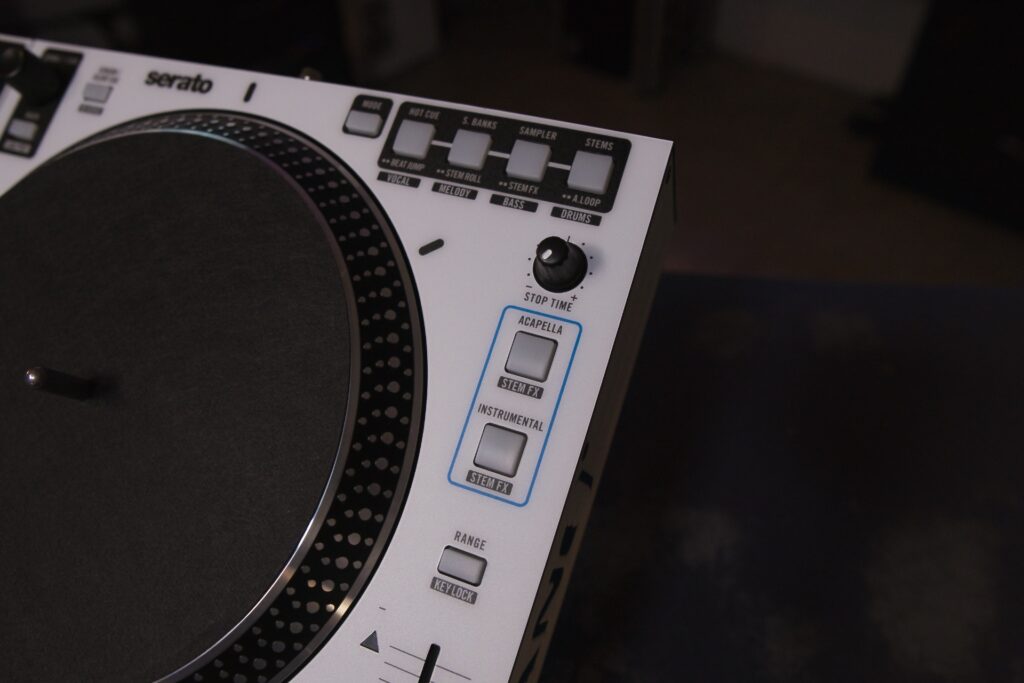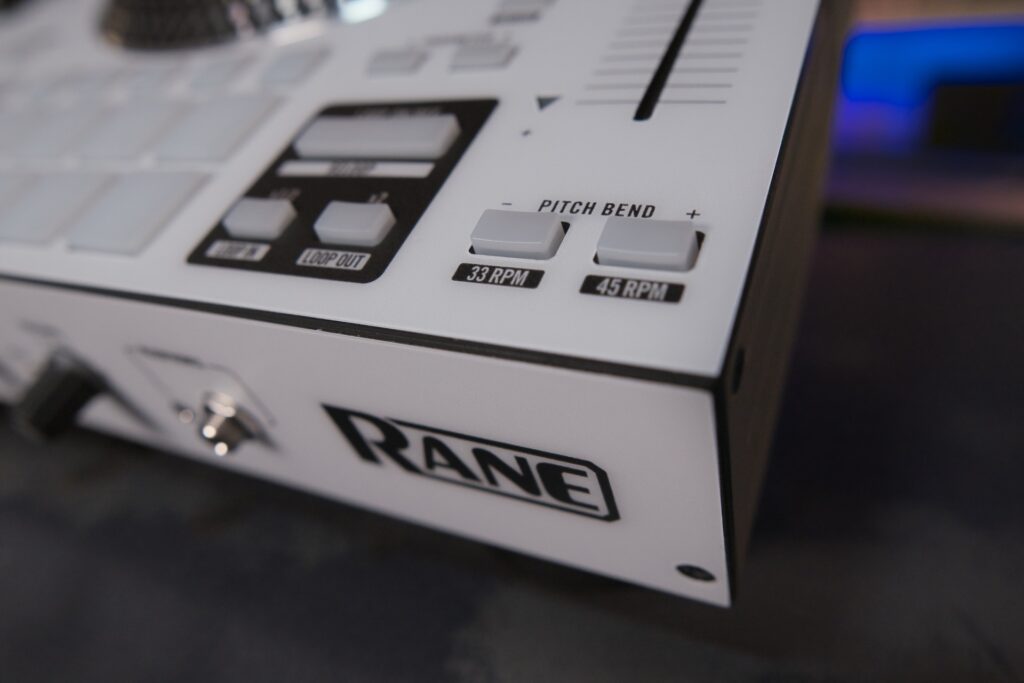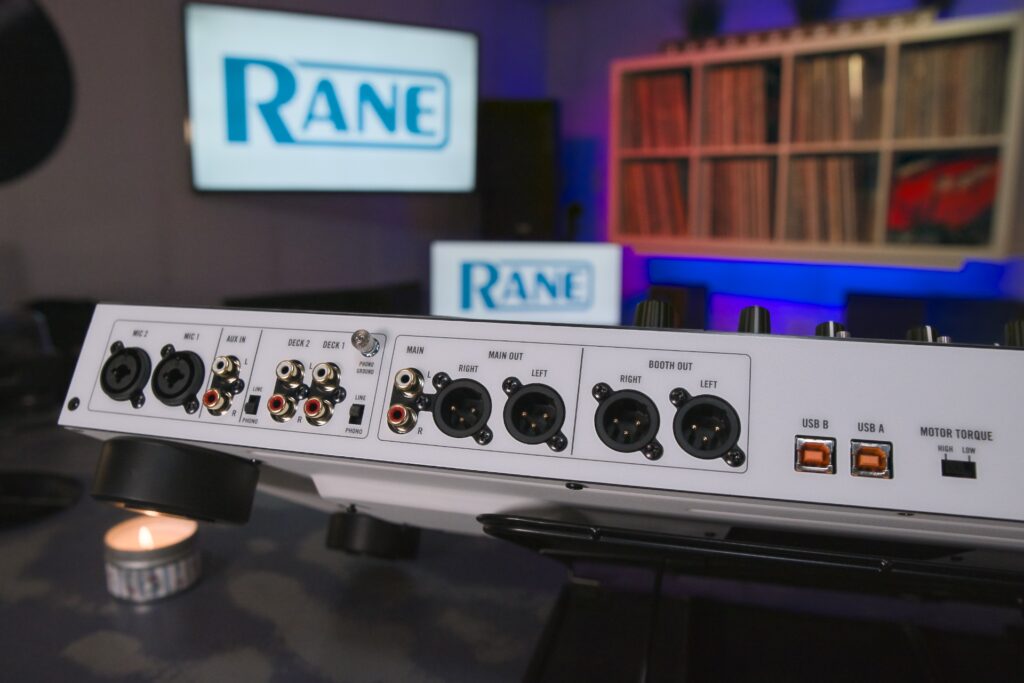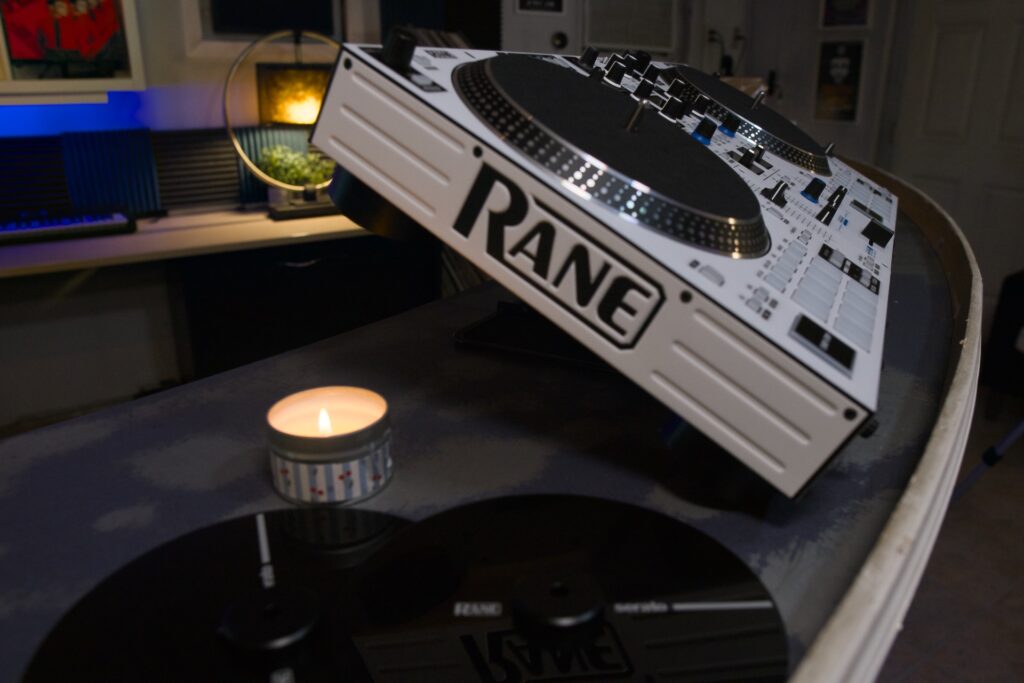Guide written by David Michael of Passionate DJ.
Buying Gifts for DJs
It’s that time of year where many of us are trying to decide how to buy gifts for that special DJ in your life.
Or, you’re just looking to spend your own holiday money. In either case, this guide is here to help you decide!
Many of these recommendations are chosen because they are considered to be flexible options, that work in multiple environments with different types of software.
But of course, don’t buy a Serato-only controller for a rekordbox DJ. Will your gift be a help or a hindrance to that DJ’s workflow?
With that small disclaimer out of the way, let’s discuss some potential gifts for DJs!
Beginner Options (Under $500)
Pioneer DJ DDJ-FLX4
The Pioneer DJ DDJ-FLX4 is my main choice for entry-level DJ hardware. This simple, budget-oriented, handsome little DJ controller lets you try various software platforms before committing.
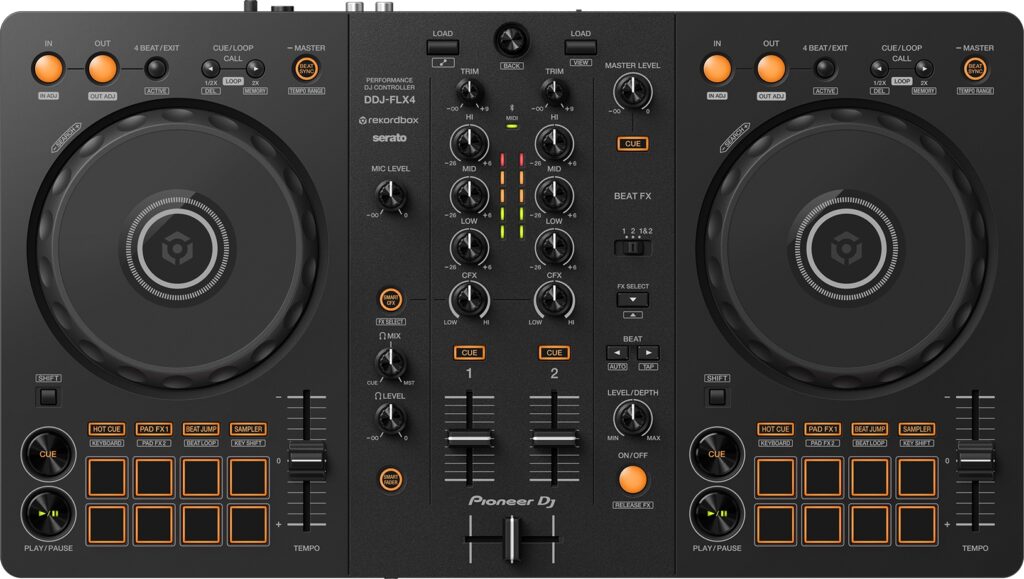
In addition to Rekordbox performance mode, you get free use of Serato DJ Lite, which is upgradable via a Serato DJ Pro subscription. It also supports Algoriddim DJay and Traktor Play.
Regardless of the software you’re using, you get access to the streaming services TIDAL, Beatport and Beatsource, and SoundCloud Go+.
The FLX4 has a matte-finish, and really looks sharp in that dark grey. As 2-channel “budget controllers” go, this one also feels particularly well put-together.
The Smart CFX feature creates complex-sounding FX with ease. And then there’s Smart Fader, which allows you to effortlessly transition between tracks with a simple glide of the crossfader.
These features allow for some hand-holding for beginner DJs. But as you grow, the FLX4 will grow with you.
Its support for multiple DJ applications and devices makes it “safer” for gifting, and is an all-around good value.
Whether you’re looking to buy a first DJ controller, or a smaller backup device for your main setup, this is a terrific choice.
For an even more affordable option, the DDJ-FLX2 supports all these same software platforms and streaming services. It also makes for one of the more compact all-in-one DJ systems you can buy.
For those interested in scratching, the DDJ-REV1 may be a better option. This is very similar to the FLX4, but its features, paddle FX and “battle layout” cater to hip-hop and open-format DJs.
Hercules Inpulse 200/300/500
Hercules has always catered to the beginner DJ, and the Inpulse line is a great option for anyone getting started.
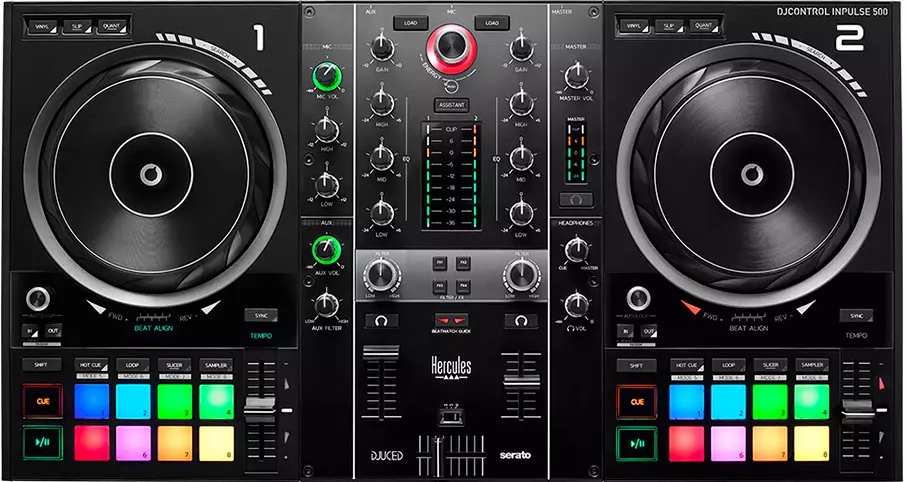
These controllers use Serato Lite (upgradable to Pro), and their own proprietary DJuced software.
The Inpulse 500 is a direct alternative to the FLX4. It supports streaming services, has lovely retractable feet (which protect it from spills), and has a light guide to help DJs learn to beatmatch.
It’s a straightforward, well-built, traditional DJ controller with little fuss. However, I’d steer clear if you are highly interested in FX, as it just doesn’t focus in that direction.
What the 500 gives is an enjoyable 2-channel mixing experience with large jog wheels and classic, intuitive controls.
The Inpulse 300 and 200 are its simpler cousins, but offer similar functionality. You miss out on things like multi-colored pads, retractable feet, and large jog wheels.
But with the savings, you could get the Hercules DJ Learning Kit ($320). This includes:
- A DJ Controller (Hercules Inpulse 200 MK2)
- Speakers (DJMonitor 32)
- Headphones (HDP DJ45)
Or, upgrade to the Hercules DJ Essentials Kit ($480). This includes:
- A DJ Controller (Hercules Inpulse 300 MK2)
- Speakers (DJMonitor 42)
- Headphones (HDP DJ60)
In either case, your gift recipient is getting a complete DJ solution from start to finish!
Intermediate Options
AlphaTheta DDJ-GRV6 & DDJ-REV5
The mid-level option I’d recommend to most DJs is the AlphaTheta DDJ-GRV6. You get four channels instead of two, and has software support for rekordbox, Serato, Virtual DJ and Algoriddim Djay – making it extremely versatile.
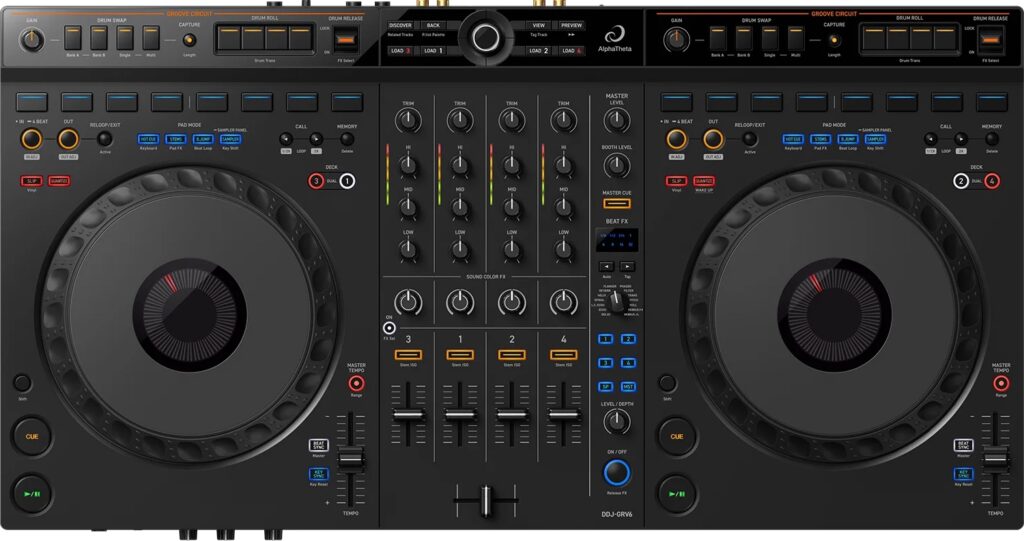
The other huge benefit of the GRV6 is that it has a very CDJ-3000 and DJM-mixer style of layout. The drum pads are laid out across high-quality full-size jog wheels, meaning that your muscle memory stays intact.
I like its very professional and straightforward aesthetic – it looks like pro audio gear, rather than a toy. It looks like it belongs. It has a very classic Pioneer FX style, quite similar to their club mixers.
Across the top, you’ll find the unique Groove Circuit feature. This is by no-means a necessity, but is a fun way to add some spice to your sets by magically replacing drums and other elements of your songs on-the-fly.
If you’re an open-format DJ interested in scratching, you might opt for the Pioneer DJ DDJ-REV5 instead.
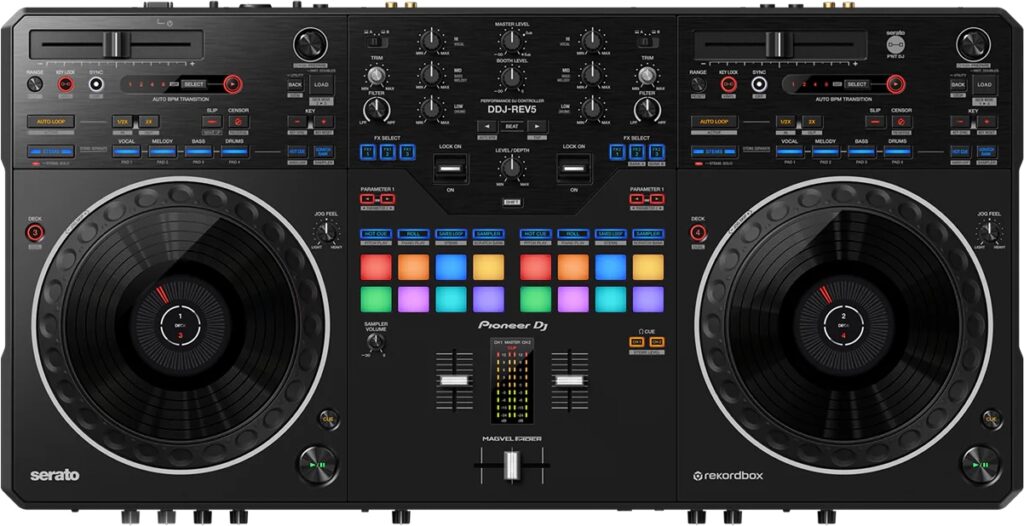
Its battle-style layout (with the pitch faders above the jog wheels), FX paddles, and a high-quality MagVel crossfader make for a much better scratch DJ experience.
Another cool thing about the REV5 is that it has very easy access to Stems controls, right here above the jog wheel. So if you’re constantly mashing together vocalized songs with short intros and outros, this layout could be a godsend.
As a bonus feature, Auto BPM Transition lets you automate the mixing of vastly different songs. It will adjust volume, tempo, and other settings for you, after you tell it how many bars to take to do so.
The DDJ-REV5 is a solid, well-built controller. However, it limits you to two channels, while being higher cost than the more value-forward DDJ-GRV6.
Standalones
So far we’ve only discussed DJ controllers, which require the use of a laptop. But what about fully standalone solutions?
Let me recommend the Denon DJ PRIME Go+. With its portable size and rechargeable battery, it’s a terrific grab-and-go DJ device.
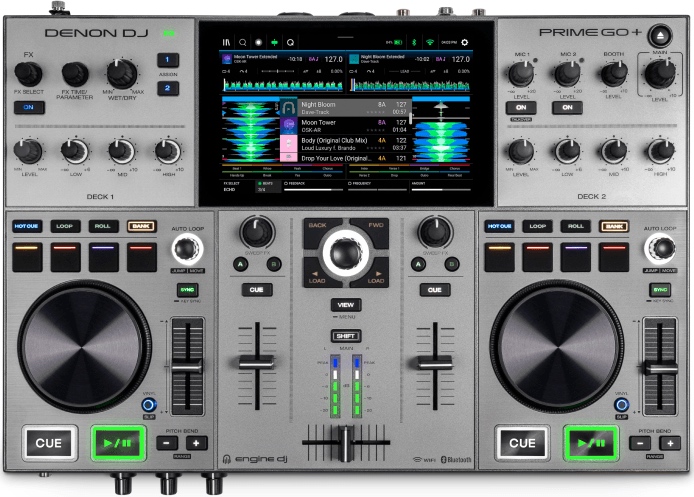
Being powered by Engine OS, the PRIME Go+ supports a crazy amount of streaming services: Apple Music, Amazon Music Unlimited, TIDAL, Beatport, Beatsource, and Soundcloud GO+.
It has a high-quality touch screen, professional connectivity options (like XLR outputs), an onboard FX suite, and is built like a little tank. It’s truly a pleasure to use.
But what if you could save money, and gain cool features? Let me introduce the Numark Mixstream Pro+.
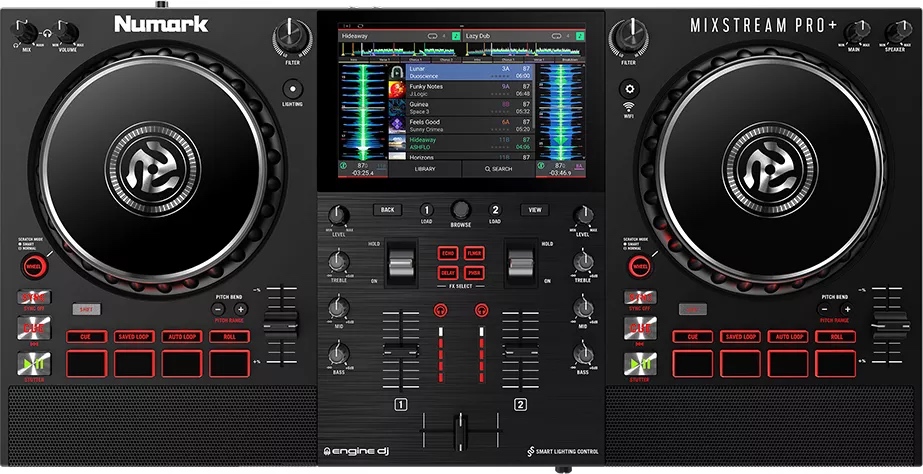
The Mixstream standalone sports onboard speakers, meaning that it’s truly an all-in-one solution for mixing and prepping music at home. They aren’t going to rock a whole club, but having these built-in is SUPER convenient!
The build quality may not be as nice as the Denon, but it still feels solid in the hands, and it runs the same OS (and thus, has similar features).
If you want to have a standalone unit with speakers AND a battery, your prayers are answered with the Numark Mixstream Pro Go.
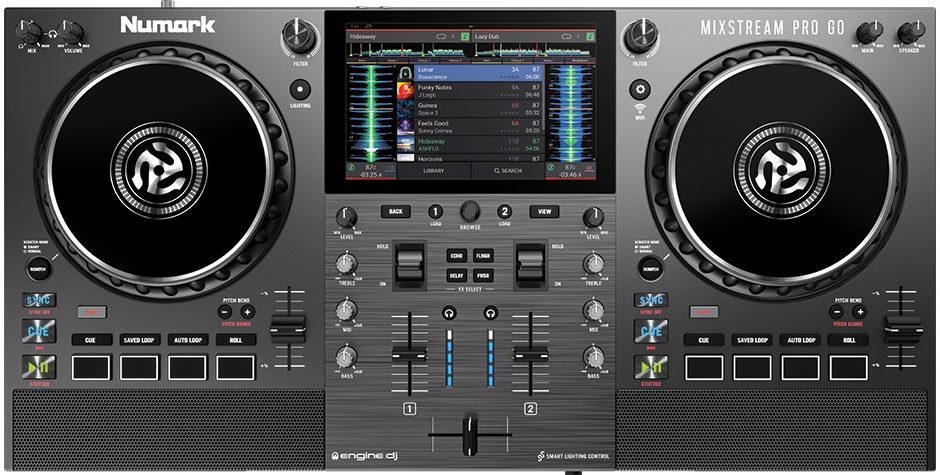
These are all fantastic standalone DJ systems at a great price. They all receive similar updates to Engine OS, have Wi-Fi access with tons of streaming services, are equipped with decent touch displays, and don’t require your gift recipient to have a laptop.
The Mixstream Pro+ and Go’s built-in speakers make them true all-in-one solutions, and a good alternative to the Hercules kits we discussed earlier.
Pro Options
Pioneer DJ DDJ-FLX10
The Pioneer DJ DDJ-FLX10 is one of the best DJ controllers around, and one of the easiest to recommend (provided it fits your budget).
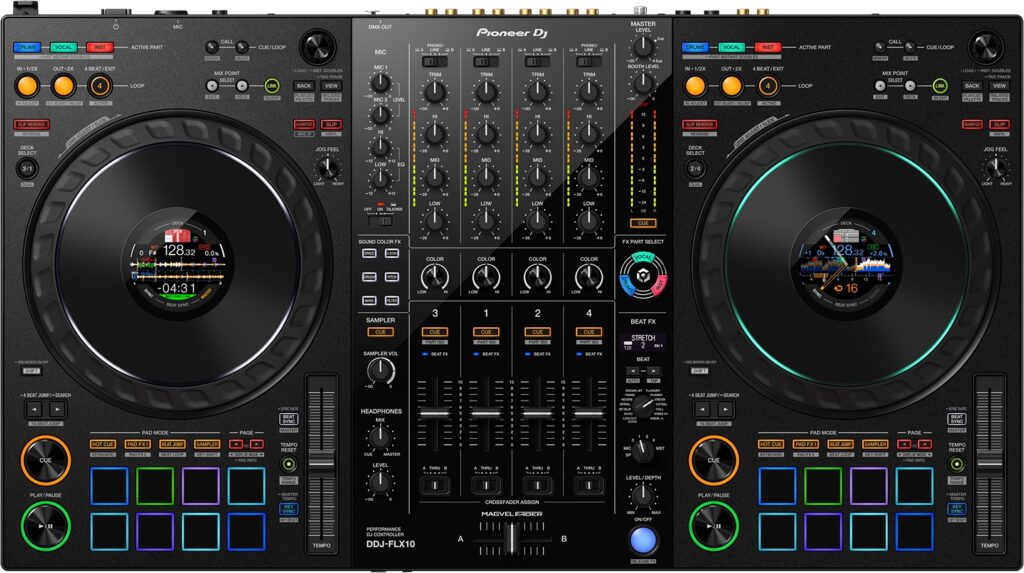
This supports rekordbox, Serato DJ, and Algoriddim Djay right out of the box – though of course there will be slight differences depending on which you choose.
This 4-channel flagship controller has external inputs, so you can add CDJs and turntables and make it the center of your entire setup. It has every pro-level port and connection you’ll need.
The jog wheels are wonderfully-stout, and the feedback provided by the crispy in-jog displays is truly useful for keeping your eyes off the laptop – as is the light ring that helps you determine the state of the selected deck.
The FLX10 has some of the most comprehensive stems controls you’ll find anywhere. Not only can you do all the normal stuff (add and drop elements such as vocals, or finely adjust them with the EQ knobs) – but you can easily apply FX directly to the stems themselves.
One unique feature you’ll find is the DMX output, which means it’s capable of controlling your entire lighting setup (using rekordbox lighting). If you want to do this anyway, it’s a huge savings to have this feature built-in.
You get a Magvel crossfader too, which means it’s perfectly capable of doing some scratching.
The best alternative to the FLX10 is the RANE Four – an amazing DJ controller that ranks among my favorites. It’s well-built, has comprehensive FX and stems controls, and supports paddle-style FX.
The RANE Four supports only Serato DJ, so be sure that this fits with the person you’re buying a gift for!
Motorized Controllers
DJ controllers with motorized platters are the best option for scratch DJs, outside of using turntables themselves. Actually, in many ways, these are way more convenient.
When the jog wheels are moving, reacting to your hand movements, it translates better to the turntablist style.
My top recommendation here is the RANE One MKII. For one thing, it’s rare to find all-metal DJ gear, with build quality this good.
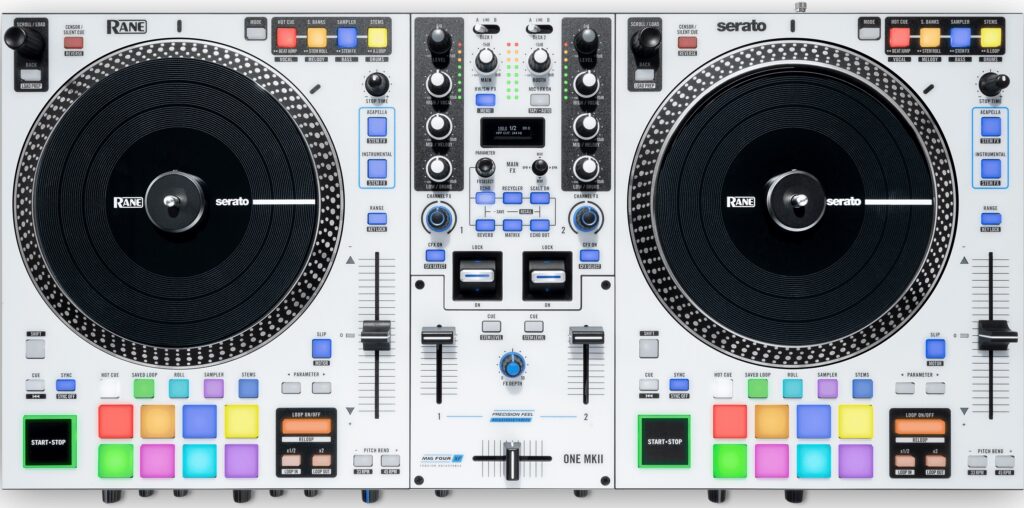
The jog wheels are cut from solid chunks of metal. The die-cast FX paddles feel nice and chunky in the hands. And the torque of the platters makes it feel like the real deal.
The MKII comes with a ton of onboard FX, which will even work with your external inputs. This makes it a great option for any DJ who has “real” turntables too.
Another terrific option is the Pioneer DJ DDJ-REV7. While the RANE does lock you into Serato, the REV7 also supports rekordbox.
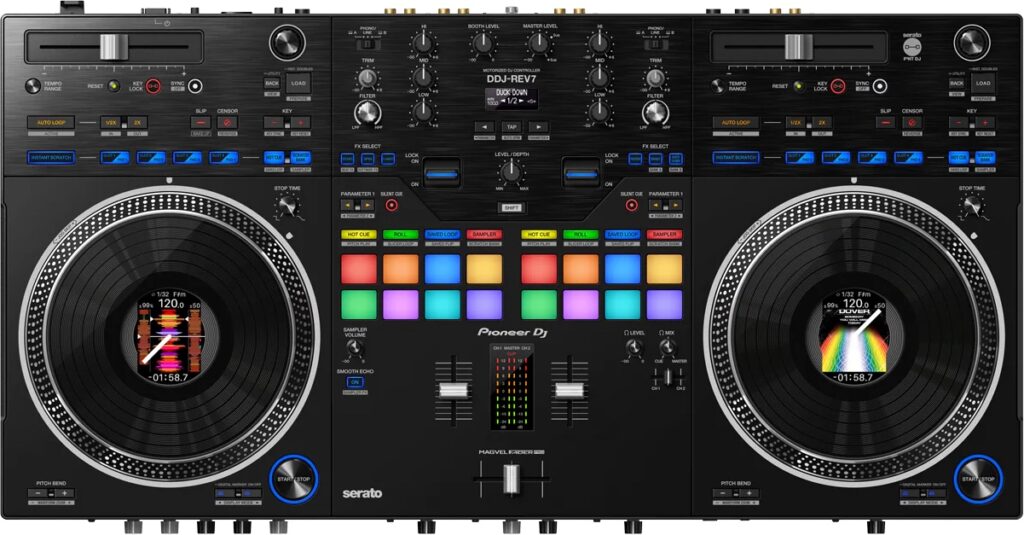
It also has really nice in-jog displays, whereas the RANE ONE has more typical spindles. However, I find the spindle style to be more robust than the somewhat compromised design of the REV7’s jogs.
That said, the REV7 boasts a ton of other benefits. For instance, its crossfader tension is much easier to adjust by using a knob (the RANE has to be opened up to do this). It also has upfader adjustments.
One really nice thing is the inclusion of onboard scratch samples, which means the FLX10 is ready to load up a sample and scratch even if you haven’t hooked up your laptop.
It also has cool bonus features like Smooth Echo and Silent Cue (see my review for more info on that).
To have your cake and eat it too, check out the RANE Performer. It’s the only four-channel motorized controller around right now, and takes the best features from the REV7 and ONE, mashing them together in one ultimate scratch-and-mix device.
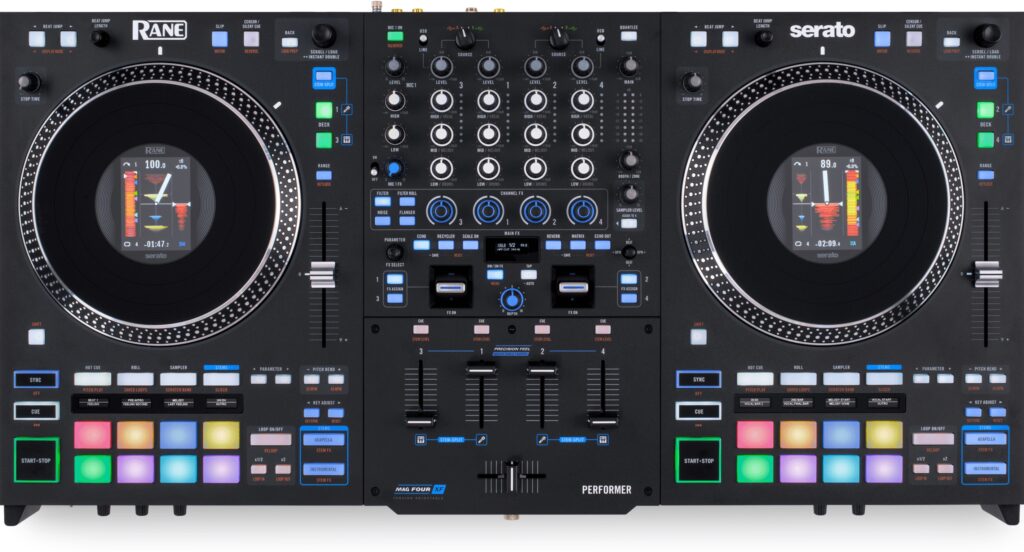
Standalones
It’s been a long time since I heard of a device so warmly-welcomed by the DJ community as the AlphaTheta XDJ-AZ. It took them several tries, but the company really nailed standalone DJ systems with this one.
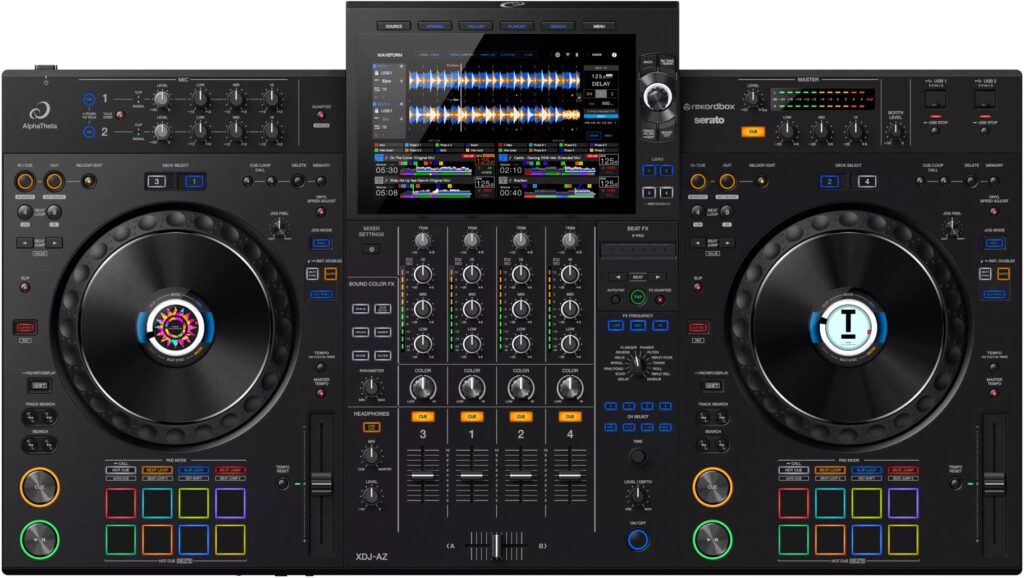
This is the best alternative you’ll find to CDJ-3000s and a DJM-A9 mixer. It’s still expensive, but at half the cost of those things, it seems like a bargain.
It has built-in WiFi, with streaming support for CloudDirectPlay, Beatport and Apple Music.
The AZ has a huge focus on sound quality. By incorporating a 32-bit D/A converter from ESS Technology, the sound quality has been significantly enhanced to create clear and dynamic audio.
One entirely unique feature is its built-in support for SonicLink – a proprietary wireless protocol. If you buy a pair of HDJ-F10 headphones (which we’ll talk about soon), it will pair directly to the AZ and give you latency monitoring from anywhere in the room.
The high-quality 10.1” touch screen is a pleasure to use. This is one of the few differences vs. using CDJs – your DJ activities are combined to a single screen.
DJs love the XDJ-AZ, but if that’s outside your budget, don’t fret. The Denon DJ PRIME 4+ and SC Live 4 are way more affordable, and offer even more for that money.
These Engine OS powered devices give access to more streaming services, more storage options, and more software options than any of the Pioneer or AlphaTheta standalones.
I’ve covered these devices extensively, including comparing the PRIME 4 and SC Live 4 directly, so be sure to check that out to learn more. By the way, the SC Live 4 has onboard speakers, too!
Cases & Stands
Jetpack Bags
If you or your gift recipient already have DJ hardware, maybe it’s time for something to hold or protect that device. A great DJ bag can not only protect your gear while on the road, but it can look great doing it.
For instance, a Jetpack Glide or Jetpack Glide XL system combines a backpack and rolling bag in one stylish package. This allows you to hold a laptop, a large controller like the FLX10, and all your accessories. Or, if all you need is the Snap backpack, it’s available by itself.
My favorite thing about these bags is the custom embroidery service, which lets you add your own high-quality custom logo.
Actually, Jetpack has a whole line of great bags which I’ve covered in great and gory detail.
DJ Stands
Laptop and hardware stands are a great accessory for the DJ booth, as it helps you elevate the screen to eye level, angle the gear, or otherwise place the equipment where you want it.
The Reloop Stand Hub Pro does even more. It has an integrated 10-in-1 USB docking hub, with power delivery.
You’ll find all sorts of ports on the Reloop: USB-A, USB-C, HDMI, ethernet, and even an SD card reader. Not only that, but it can be angled, rotated, and flipped in a zillion different ways and truly tuned to your personal spec.
I talk a lot more about the Stand Hub Pro, and several other great pieces, in my Guide to DJ Stands:
Headphones
Good headphones are crucial to the DJing experience, and for cans that take it to the next level, check out the AlphaTheta HDJ-F10.
The F10s are wireless headphones, something you don’t often see in the DJ booth. That’s because it uses a proprietary SonicLink protocol, which is way faster than something like bluetooth.
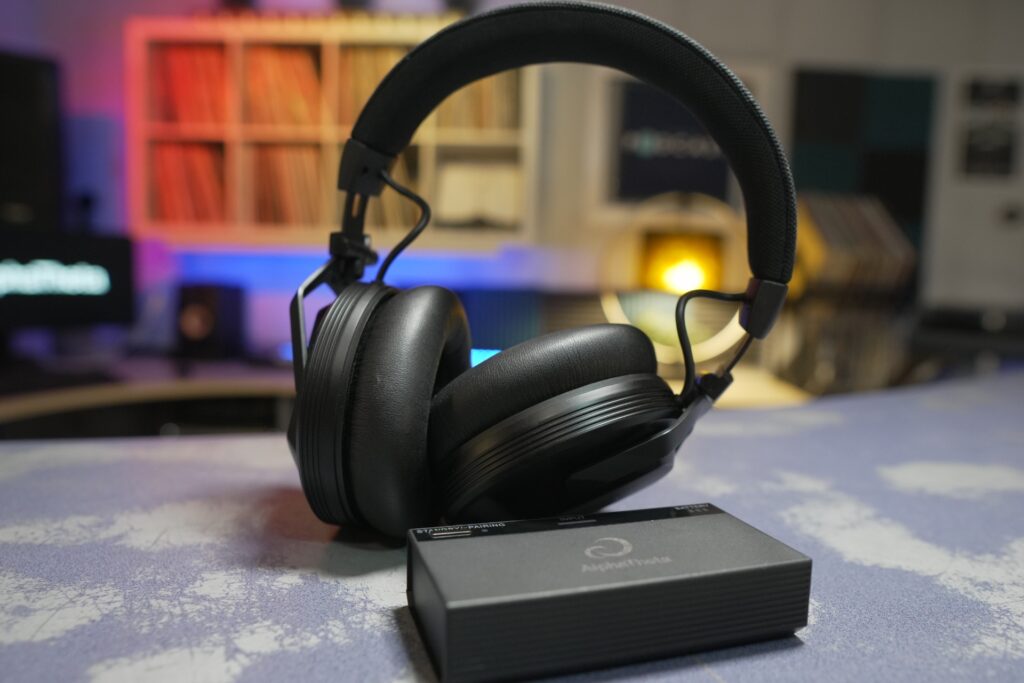
What this means is that you get instant response – no noticeable latency – when cueing and mixing in your headphones. And trust me, you get very used to not being tethered to the mixing console.
These are sold with, or without, the necessary receiver to use this fancy wireless signal. One reason you might buy it without it is because it will pair natively to the XDJ-AZ. These two items together are a killer pair.
Of course, they sell several more affordable options under their Pioneer DJ headphones line, all the way down to the HDJ-CUE1 for well under $100.
Lights & Accessories
The DJ Hookup carries all sorts of accessories and lights to enhance your mixing experience. Here are a few good gift ideas from their staff:
Evermix Box5: this is a pro audio interface which lets you record and livestream your sets with studio-quality audio.
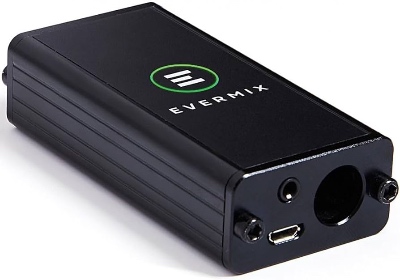
Capture audio in 24-bit, 44.1kHz WAV audio, with auto-limiting to prevent distortion and clipping. Broadcast directly to platforms like YouTube, MixCloud, and Twitch. It’s plug-and-play compatible with iOS and Android devices.
AlphaTheta SanDisk: skip the pharmacy-special USB drives and consider this high-speed option, for those DJing on CDJs or standalone DJ systems.

Starting speeds up to 1,000MB/s2 read and 900MB/s2 write make track mixing and set management a breeze. But the coolest thing is how it’s USB-A on one end, and USB-C on the other, making for a very versatile drive.
Jetpack Booster: these little stackable rubber pucks are handy for raising your DJ hardware up to your preferred height. As someone with a bad back, I greatly appreciate products like this.
Not only does it make you more comfortable, but can provide space for cable management, or perhaps make room for a laptop to slide under!
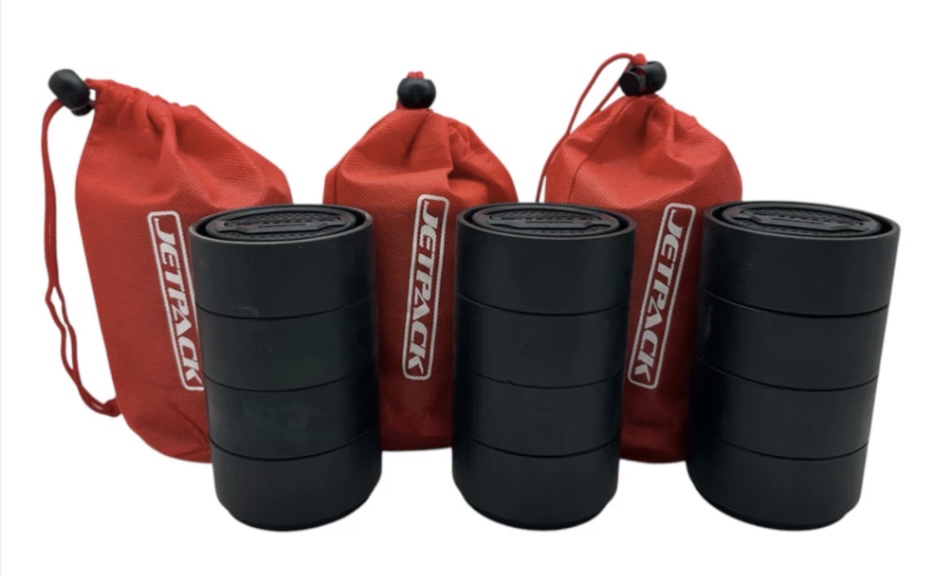
JMAZ Lighting: this line of lighting products has everything you need, from battery-powered uplights like the MAD PAR 4IP, or portable LED Galaxy Tubes.
From plug-in and stationary, to battery-powered and portable, JMAZ is guaranteed to have a solution for your lighting needs as a DJ.
Producer Options
What about making music? The DJ Hookup has your needs covered there, too:
Akai MPK MINI IV: this extremely affordable MIDI controller is equipped with a lovely keybed, velocity-sensitive pads, RGB backlighting, and mod wheels. It’s honestly a terrific deal that’s hard to pass up at this price, even if you already have a larger keyboard. It makes for a great travel piece!
Akai MPC Live III: on the other end of the price spectrum is this standalone music production center with a 7” multi-touch display and industry-leading beat pads. It has built-in speakers, microphone, and battery – making it a truly portable all-in-one production solution.
Novation Circuit Rhythm: this compact, battery-powered standalone sampler allows you to make beats and produce sequenced tracks straight to an SD card. Record samples directly in, then slice, sculpt and resample them effortlessly. -these have an $80 temporary price drop!
